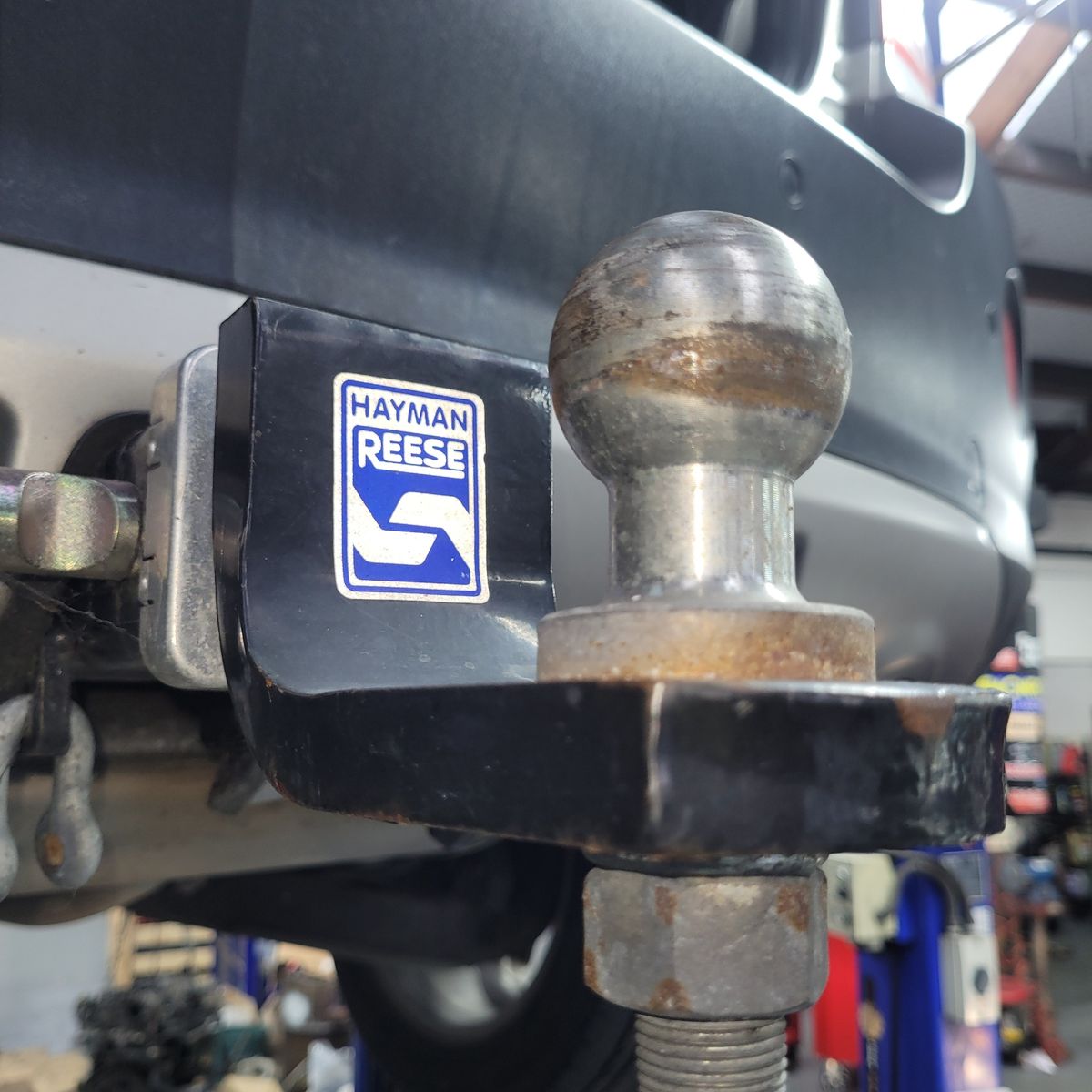About tow bars:

When comes to getting a new tow bar, there are a few things to consider. When getting a tow bar fitted, you should think about what you want to carry/pull and whether your car will be able to handle it while also meeting the government requirements.
Once your tow bar is fitted, there should be a place card with a number of up to three digits printed on it. Each digit of this number represents a weight rating for the trailer. Please note, these numbers are set by the manufacturer of your car and do not reflect the tow bar itself. These numbers represent:
Un-braked Weight: Un-braked weight is the maximum weight your car can support when pulling a trailer with no brakes.
Braked Weight: Braked weight is the maximum weight your car can support when pulling a trailer with brakes.
Tongue Weight: Tongue weight is the downward weight being applied to the tow bar. This is important if you are carrying bikes racks etc as these apply large amounts of downward weight on your tow bar.
When to replace the towbar?
A tow bar may need replacement if it has suffered damage, if it is no longer suitable for your towing needs, or if it has exceeded its expected lifespan. Here are some signs that your tow bar may need to be replaced:
- Physical damage: If your tow bar has been damaged in an accident or has suffered from corrosion or rust, it may need to be replaced. Any cracks, bends, or other signs of physical damage can affect the performance and safety of your tow bar.
- Signs of wear and tear: Most tow bars are designed to last for many years, but they can eventually wear out and become less effective. If your tow bar is showing signs of wear, such as cracks, corrosion, or loose bolts, it may need to be replaced.
- Loose connections: If your tow bar is not securely connected to your towing vehicle or the vehicle being towed, it may need to be replaced. Loose connections can cause instability and increase the risk of accidents.
Tow bar mounting:
- Tow bar not securely attached
- Missing Nuts or Bolts
- Corrosion Damaged
- Cracks or visible damage
Tow bar tow ball:
- Cracked tow ball
- Worn tow ball
- Corrosion
- Incorrect sized towball
The official tow bar requirements and specifications for New Zealand can be found here: Towbar NZTA
Installing a new towbar – What type of towbar should you use?
Choosing the right tow bar for your car is essential to ensure a safe and successful towing experience. When selecting a tow bar, consider the following factors:
- Compatibility: Ensure that the tow bar you choose is compatible with your vehicle’s make, model, and year. Some tow bars are designed for specific vehicles, while others can be used with a range of vehicles.
- Towing capacity: Determine the maximum weight that your vehicle can tow and choose a tow bar that is rated for that weight or higher. The towing capacity of your vehicle can be found in the owner’s manual or by consulting with a mechanic.
- Type of tow bar: There are two main types of tow bars: fixed-tow bars and collapsible tow bars. Fixed-tow bars are more durable and can handle heavy towing loads, but they are also more difficult to store when not in use. Collapsible tow bars are more convenient to store but are not as strong as fixed-tow bars.
Towbar installation and repairs in Hamilton:
If you need a new tow bar, or your old one needs replacing, the friendly, reliable team at Grimmer Motors can help to organise this for you.
For all your tow-bar repairs and replacements in Hamilton, contact Grimmer Motors today!
Please Note – we don’t generally stock or supply just “parts only” for this service. We are a general automotive repair workshop. If you are able to bring your vehicle to us, we can diagnose the problem, find and fit the necessary parts, or organise the appropriate service for you.

